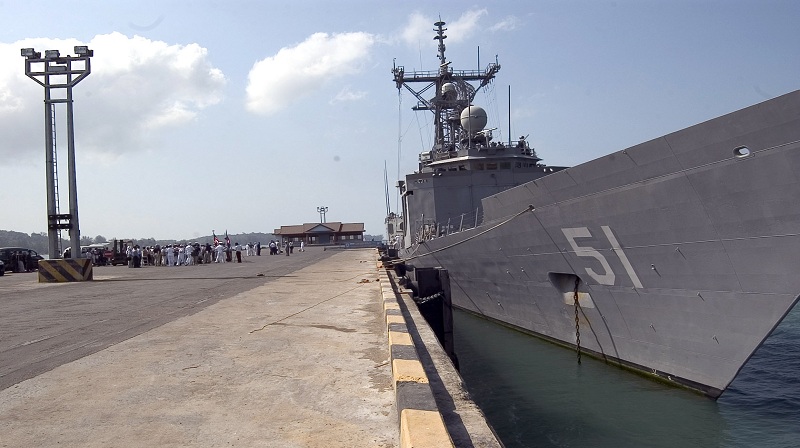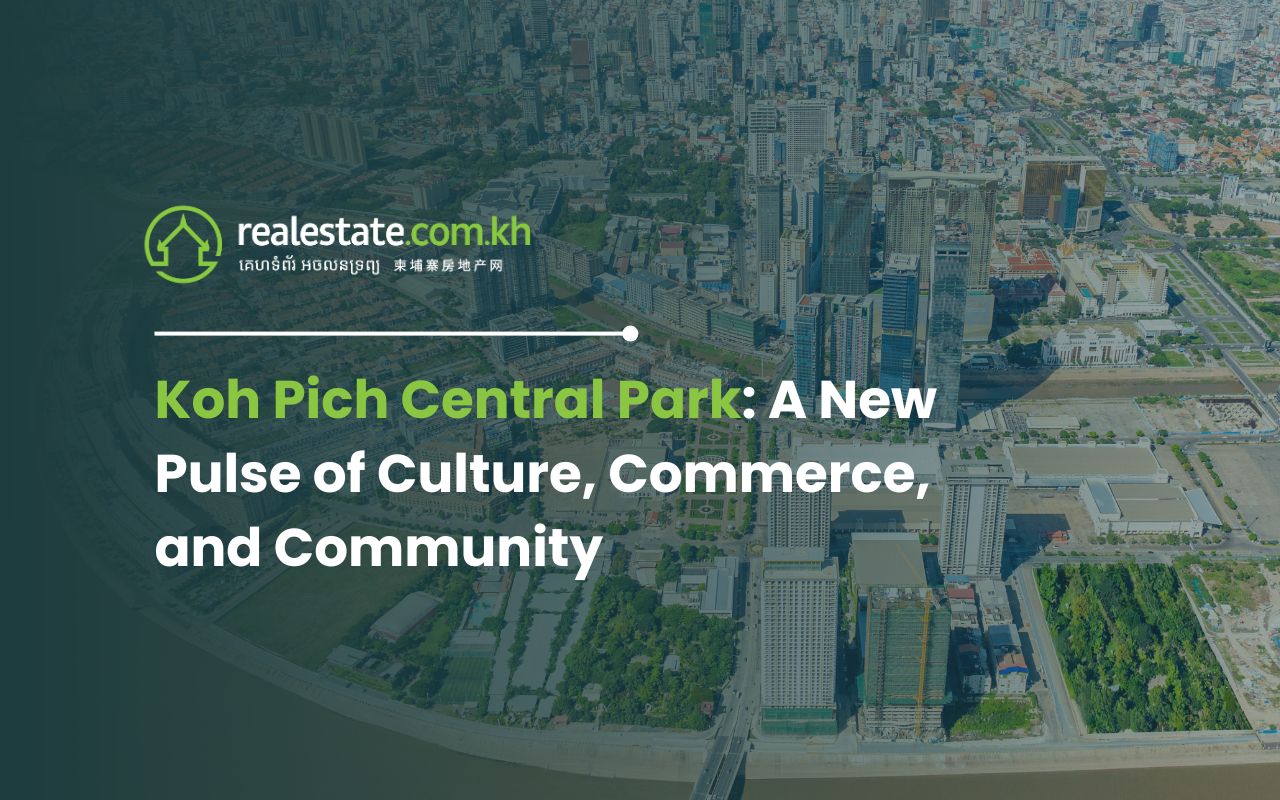
Key Trends:
- 7.0% GDP for 2016; Predicted 7.1% for 2017.
- GDP rate higher than South East Asia average GDP by 2.5%.
- Primary sources of GDP growth includes Agriculture, Garments & Footwear, Construction and Tourism.
- Construction most dynamic engine of GDP growth for 2016.
- First 8 months of 2016 FDI in real estate increased over 700% since 2015, totalling $7.2B.
- Inflation levels moderate.
- GDP per capita rose almost $100 to $1,216 in 2015, and forecasted at $1,325 for 2016.
- Cambodia raised to “lower-middle income” bracket as of July 1 2016.
- US$ appreciation, and a slowing China and EU having some downsides on Cambodian market.
GDP Trends:
Rami Sharaf, Member of International Advisory Council, APCO Worldwide, said in an interview with Realestate.com.kh in late 2015 that, “the major attraction for foreign investors considering whether they should invest in Cambodia is the ASEAN-member nation’s steady economic growth: 7.5% average for the last 5 years, year on year. This places Cambodia as the 21st fastest growing country globally.”
While this GDP rate has slowed somewhat in 2016, it still sits at a level of growth that is outperforming Southeast Asia’s aggregated GDP by approximately 2.5%, according to the recent Cambodia Real Estate Highlights 1st Half 2016 report from Knight Frank Cambodia.
In 2015, the Asian Development Bank (ADB) had forecasted GDP growth for Cambodia at 7.2% for 2016. However, this growth rate was retracted slightly by the ADB this year to 7.0% for 2016, and forecasted for 7.1% in 2017.
The Word Bank agrees with ADB’s index prediction for 2016. The Bank cites that “the garment sector, together with construction and services, are the main drivers of the economy. Growth is expected to remain strong in 2016, as recovering internal demand and dynamic garment exports offset stagnation in agriculture and softer growth in tourism.”
Downside risks cited by the World Bank also include “potential renewed labor issues, continued appreciation of the US dollar, slower economic recovery in Europe, and spillovers from a slowdown in the Chinese economy.”
Given the comparatively high reliance of the economy on the garment and footwear industries, Knight Frank Cambodia mentions that, “there is a growing need to improve the quality and productivity of the labour force for Cambodia to sustain GDP growth at current levels.”
If Cambodia cannot continue to support the quality, price and productivity efficiencies of the garment and footwear industry, key market investor groups may look to shift their manufacturing operations to other destinations that can produce more-competitively than Cambodia. If this occurs, Cambodia’s GDP will take a sharp decline.
Diversification of industry is another mechanism that Cambodia can use to combat potential risks of a decreasing garment and footwear market share, and this is something being actively promoted within the Council for the Development of Cambodia’s (CDC) Cambodia Industrial Development Policy 2015 – 2025.
The need for the Cambodian Government to take an increasingly proactive approach to long term economic policy was also mentioned by the World Bank, suggesting the benefits of the ASEAN alliance may take some time to directly influence GDP levels: “Improving the overall business environment would enhance competitiveness across sectors, underpinning product and market diversification, while also helping firms to be well prepared to take advantage of the single market and production base goal set by the ASEAN Economic Community.”
Nevertheless, both the ADB and the World Bank were in agreeance that with the current economic growth trends and the continuance of moderate levels of inflation, disposable incomes for the Cambodian population should continue to increase yearly, supporting domestic consumption growth and improving overall economic stability in the medium-to-long term.
The Cambodian Ministry of Economy and Finance cited that GDP per capita was $1,135 as of 2014, rising to $1,216 in 2015, and forecasted at $1,325 for 2016.
Meanwhile, as Cambodia was reclassified by the World Bank from “low-income” to “lower-middle income” as of July 1 2016, there is potential for a reduction in aid and development support and a potential decrease in preferable trade duty exemptions.
Lower-middle income criteria means there is now a Gross National Income (GNI) per capita falls between $1,026 and $4,035, as compared to less that $1,025 for low income nations.
The Bank states that, “improving the public investment management framework to scale up publically financed infrastructure would be advisable in the face of declining donor-financed capital.”
Given that this new classification may influence agreed duties and tariffs for trade from Cambodia to certain key markets, this also calls for continued improvement in the skills and efficiencies of the garment and footwear sector (as noted above). Higher barriers for trade will mean that costs of manufacturing will need to decrease in order to maintain the sector’s international competitiveness.
While this new classification may mean a lower reliance of foreign aid for Cambodia, an increase in the lower-income bracket seemingly should benefit the retail and retail real estate sector, increasing disposable incomes and fueling consumer expenditure. It should also have positive effects for the domestic residential real estate market moving forward, increasing the number of earners applicable for home financing and higher standards of accommodation purchasing and renting generally.
FDI Trends:
According to the ASEAN Investment Report 2016, foreign direct investment (FDI) into Southeast Asia's least developed countries grew at the end of last year. According to the report, Cambodia, Laos, Myanmar and Vietnam saw a 38% increase, supposedly due to multinational companies entering the markets to stake their claim in the newly formed Asean Economic Community (AEC).
However, overall FDI flows to Southeast Asian Nations bloc dropped by 8% in 2015, to $120 billion. EU investment fell 20% to $20 billion; and U.S. capital decreased by 17% to $12.2 billion.
Nevertheless, Foreign Direct Investment (FDI) in the Cambodian property sector continues to grow rapidly. Total investments in real estate were $7.2 billion between January and August 2016, representing a massive 700%+ increase from the preceding period.
The source of this FDI is various, with a total of 18 countries contributing. Yet the MLMUPC states that China was ranked number one for construction and property FDI, South Korea second, and Japan third.
Construction Trends:
In a recent construction sector report, the MLMUPC said it had approved 1,753 projects worth $7.2 billion in the first eight months of 2016, compared to 2,305 projects worth $3.3 billion in all of last year, a 400%+ increase.
Since the year 2000 until June 2016, the MLMUPC has been said to have approved approximately 35,206 projects, equal to 85 million square meters countrywide. For this 16 year period, a total $32.3 billion construction investment has been accomplished by the Kingdom.
Meanwhile, the MLMUPC has also released information for the first five months of 2016 that confirms 990 new construction projects have been approved since the start of the year, compared to just 2,305 approved projects throughout the the whole of 2015. Local media have speculated that this is in part due to an increase in administrative efficiencies within the Ministry in 2016.
The World Bank accounts for this large increase in demand for housing and huge investment in the construction industry as an indicator of the return of political stability in Cambodia and rising incomes amongst the general population.
According to Ross Wheble, country manager of Knight Frank, in the Cambodia Real Estate Highlights 1st Half 2016, the outstanding turnout of new construction projects in 2016 so far has ultimately led to a stage of moderation as a means to address the short-term risks in the market. By doing so, Cambodia has the potential to climb the ranks and outperform Southeast Asia through the process of diversification, and “robust growth is expected to continue.”
Recent reports state that the Ministry of Economy and Finance estimate construction growth will moderate to 15% in 2016, and 10% by 2020, compared to 19% in 2015. In slight contrast, The Cambodia Infrastructure Report from Business Monitor International suggests that overall construction sector expansion is forecast to grow 9.9% in 2016 and 9.8% in 2017.
However, approximately 10-20% of launched projects have halted construction in the first half of 2016, according to various industry sources. Hence, it is unlikely that these halted projects have been accounted for in the reports released to date in 2016.
Learn more about Cambodia today in our detailed investor guides!





Comments